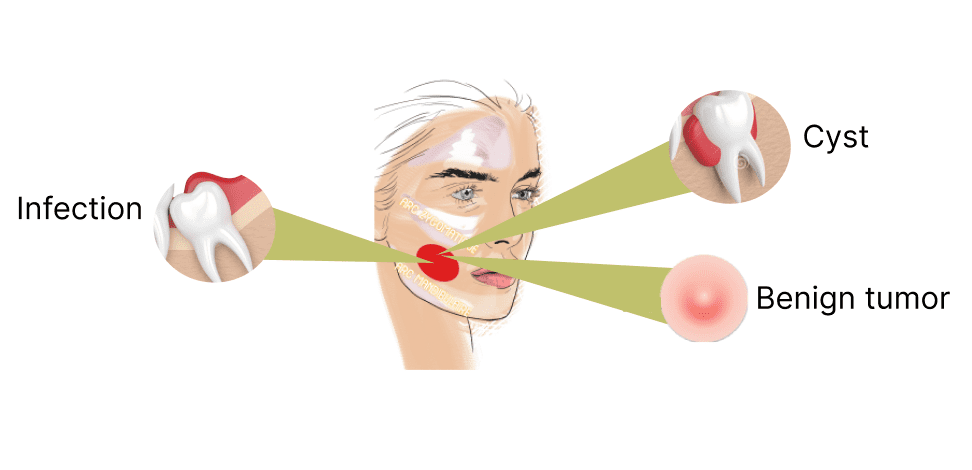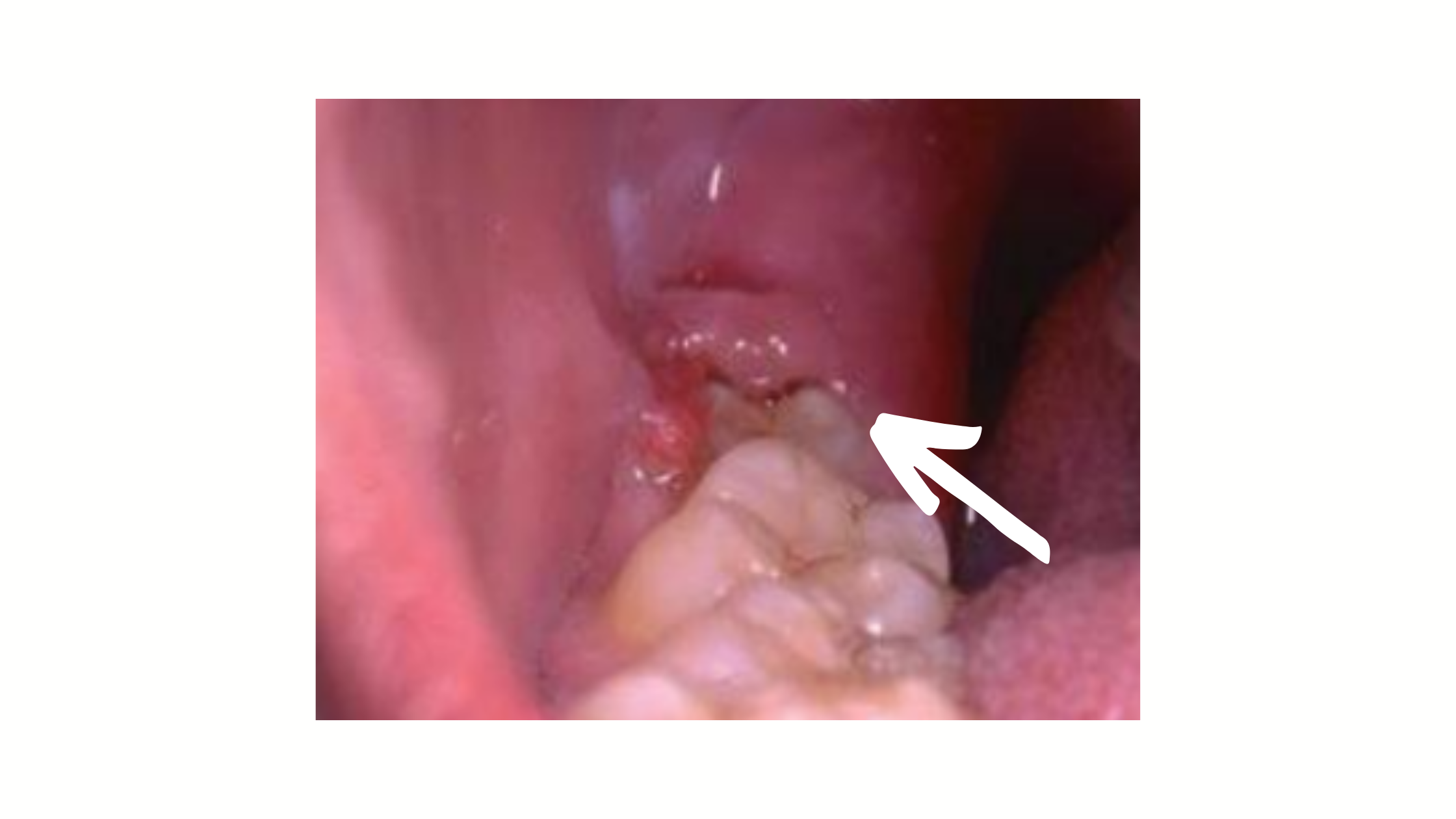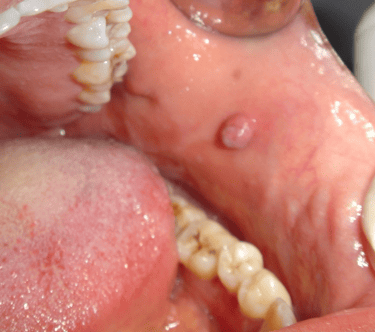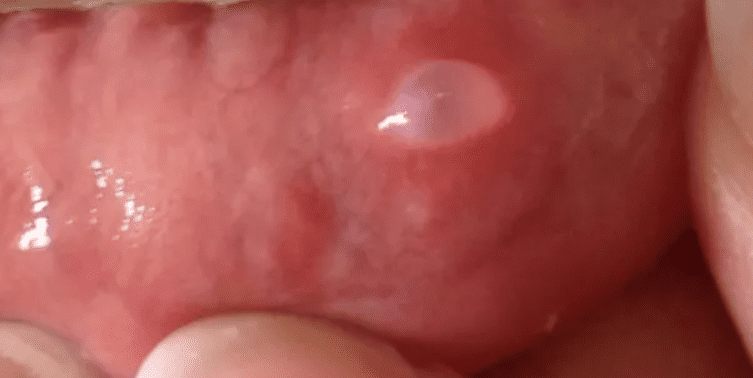What is this lump inside my cheek near my wisdom teeth?

Wisdom teeth are the last to come in, and they’re known for causing many problems. Since there’s often not enough space for them to fit properly, they may grow tilted or in the wrong direction. When that happens, they can rub against the inside of your cheek while chewing, leading to painful sores or even a small whitish bump or lump.
An even more common issue is when a wisdom tooth only partially erupts, leaving a small flap of gum tissue over it. Food and bacteria can easily get trapped under this flap, causing swelling, tenderness, or an infection in the area.
In rare cases, wisdom teeth can develop abnormal growths such as cysts or tumors, especially if the tooth remains impacted (trapped in the jawbone).
The good news is that most of these problems are not serious and usually clear up with simple treatments.
If you’ve noticed a lump near your wisdom tooth, the first step is to identify what’s really causing it — and that’s exactly what we’ll break down next.
In this article...
1. Lumpy Lesions that Can Arise with Wisdom Teeth
2. A Lump inside your cheek could be a benign growth — What Does That Mean?
3. Other Symptoms that Can be Associated with Wisdom Teeth
4. What You Can Do Now and What Comes Next
Lumpy Lesions that Can Arise with Wisdom Teeth
When wisdom teeth grow angled or stay buried under the gums, they can quickly become troublesome. The good news is that most of these issues are not serious and highly treatable, as long as you have them checked early.Even if your wisdom teeth seem to be growing normally, it’s still important not to ignore them. Some problems can develop slowly and without obvious symptoms at first.
Here are the different types of lumps that can appear around wisdom teeth:
1. Infection:
One of the most common causes of swelling in the wisdom teeth area is an infection of the gum overlying the tooth, also known as pericoronitis. This happens when the tooth has just appeared above your gum but has not finished its eruption.
A partially erupted wisdom tooth can make it easier for bacteria and food debris to accumulate in this area, leading to infection of the gums surrounding the tooth.

Sometimes, a small piece of gum tissue can partially cover the tooth and rub against the opposite teeth, making the infection and pain worse.
Common symptoms of pericoronitis include:
- Intense pain that spreads to the jaws
- Pus drainage
- Difficulty opening the mouth
- Bad breath and bad taste in the mouth
- Swelling in the affected area
- Fever, loss of appetite, and swollen lymph nodes under the lower jaw
Left untreated, the infection can spread to the cheeks, causing diffuse swelling. This condition is called facial cellulitis and can become serious if ignored.
If you notice a sign of infection, see your dentist as soon as possible to assess and treat the problem.
2. Cyst and tumor:
It is not uncommon to encounter a cyst or benign tumor around an emerging wisdom tooth, especially if it is impacted (embedded in the bone).
A study of 5,486 impacted wisdom teeth found cysts in about 2.2% of cases and tumors in 1.1% of which 0.05% were malignant (cancerous).
In their early stages, they develop silently and without symptoms. However, when they reach a significant size, they can deform the jawbone and even the face.
That’s why wisdom teeth that are still growing should be checked regularly by your dentist to catch any problems early and treat them before they become more serious.
3. Other benign lumps of the mouth:
A Lump inside your cheek could be a benign growth — What Does That Mean?
When a wisdom tooth erupts at a slight angle, with its chewing surface pressing against the inside of your cheek, it can cause ongoing irritation that may lead to ulcers or small lumpy lesions.These lumps aren't only because of wisdom teeth. Anything that constantly irritates or rubs against your mouth tissues can cause unusual growths or bumps.
For example, if you’re repeatedly biting your cheeks, wearing an old denture, or have braces, these things could be the actual cause.
1. Fibroma
A common type of these growths is called Fibroma (aka fibroepithelial hyperplasia). It's the most common benign (non-cancerous) lump in the mouth, mostly found in people between 30 to 50 years old.
How do fibromas appear? It’s basically your body’s way of adapting to ongoing irritation or injury.
The cells in the affected area start multiplying and producing extra collagen, forming a firm, smooth mass — usually about 1 to 2 centimeters wide.
It’s typically painless and blends in with the surrounding tissue (as shown in the image below). However, if you accidentally bite or irritate it again, it can become red, white, or slightly swollen.

Fibroma inside the cheeks
2. Mucocele
Another possible cause of that lump is something called Mucocele. It's often a clear or bluish blister filled with fluid. This can happen when you've accidentally hurt a salivary gland, like by biting your cheek. When a tube in the gland that releases saliva into your mouth gets damaged, it can block the saliva flow and make a spot on your cheek to swell.

Mucocele on the lips
So, even if it's unlikely to be anything serious, if you notice a sore or wound that won't heal, don't wait to see your dentist or doctor.
Treatment usually involves surgical removal of the growth. If the wisdom tooth is the real culprit, it may need to be extracted.
Other Symptoms that Can be Associated with Wisdom Teeth
Wisdom teeth can be like a ticking time bomb. If they don’t have enough room to emerge, they might stay symptom-free for years — then suddenly flare up and cause various problems.Here are some symptoms commonly associated with wisdom teeth:
- Localized or spreading pain: The pain may be felt locally in the wisdom teeth area or extend to the jaws, ears and temporomandibular joint. It may simply be a sign that the wisdom teeth are working their way through the bone and gums to reach their final position. However, it can also indicate an infection, especially if the pain is severe.
- Gum Inflammation: As wisdom teeth push through the gums, mild swelling and tenderness in the area are common. Significant swelling and difficulty opening the mouth fully, however, are warning signs of more serious complications.
- Infection: Wisdom teeth are more vulnerable to infection. Their position at the back of the mouth makes them hard to clean with a toothbrush, which makes them more likely to develop cavities and infections.
What To Do Now and What Comes Next
When you notice a lump near your wisdom tooth that wasn’t there before, the first step is to find out exactly what it is and whether it’s caused by the wisdom tooth or not.Only your dentist can help you figure this out. Once you know where it came from, it’s much easier to decide on the right treatment.
If the lump is caused by your wisdom tooth, treatment may involve addressing the underlying problem, such as treating the infection or removing the tooth.
If the lump is unrelated to the tooth and is causing discomfort, surgical removal of the growth may be the right solution.
If the lump looks suspicious, a biopsy may be needed to find out exactly what it is.
In the meantime, while you wait to see your dentist, here are some ways to relieve the discomfort:
- Make sure you practice good oral hygiene to reduce the bacterial load in your mouth and prevent potential infections.
- Rinse your mouth several times a day with salt water (half a teaspoon of salt in a glass of water).
- Use over-the-counter painkillers.
- Alternate between hot and cold compresses for up to 10 minutes to see which works best for you. Cold packs help relieve inflammation, while heat or gentle massage is usually better for easing muscle tenderness and tension.
- Avoid scratching or biting the lump, as this can trigger or worsen the infection.
- Prevalence of cysts and tumors around the retained and unerupted third molars in the Indian population https://www.ncbi.nlm.nih.gov/pmc/articles/PMC4252379/
- Fibroma epidemiology and demographics https://www.wikidoc.org/index.php/Fibroma_epidemiology_and_demographics/
- Oral Medicine - Book by Michael A. O. Lewis and Richard C. K. Jordan
- Essentials of Oral Pathology - Book by Swapan Kumar Purkait